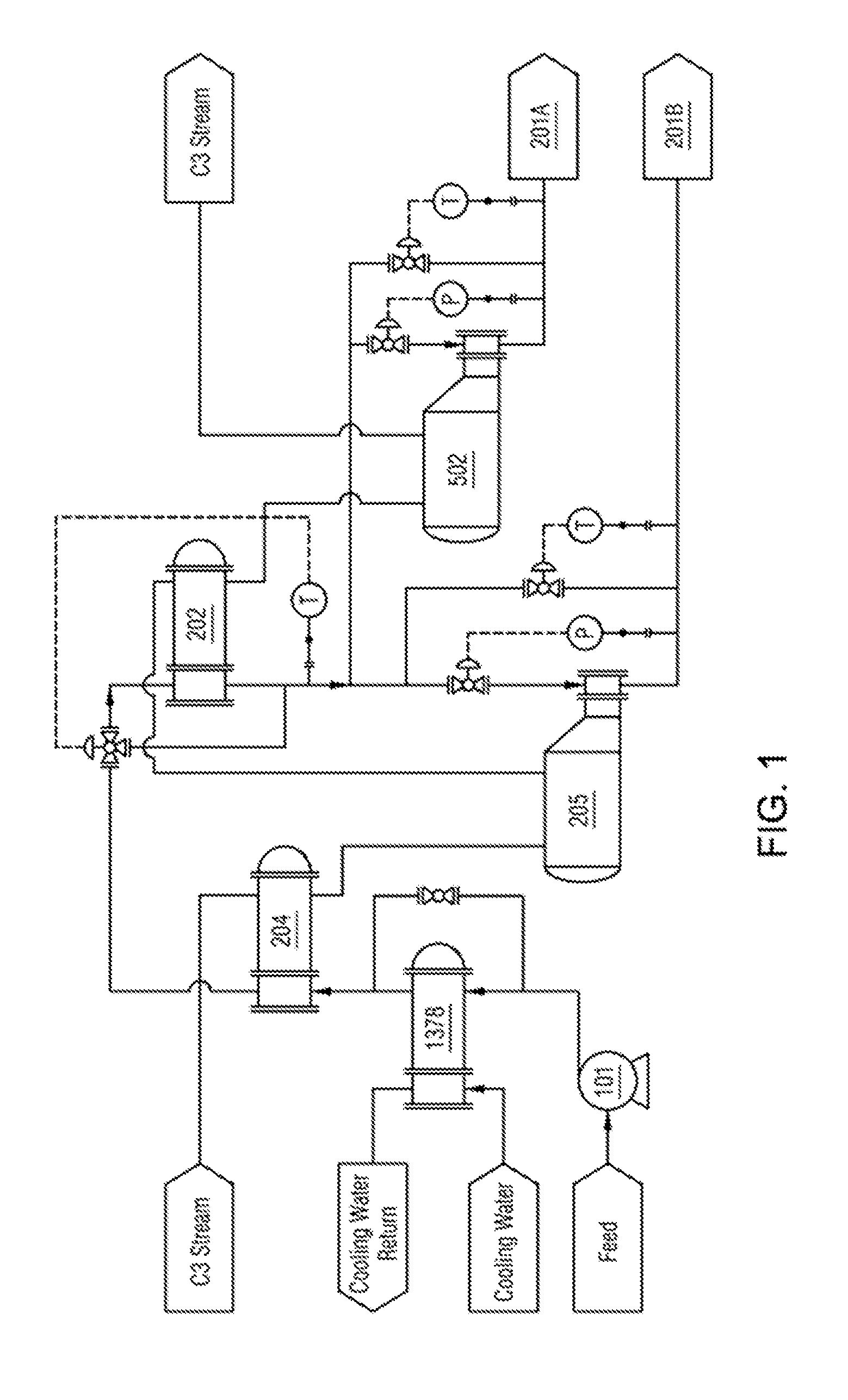Polymerization Process
- Summary
- Abstract
- Description
- Claims
- Application Information
AI Technical Summary
Benefits of technology
Problems solved by technology
Method used
Image
Examples
examples
[0052]Polymerizations in Examples 1 and 2 were conducted according to the present invention in an existing plant for production of Product A, an EPDM comprising about 76 wt % of ethylene-derived units, about 3.3 wt % of 5-ethylidene-2-norbornene (ENB)-derived units, with the balance being propylene-derived units, based on the weight of the EPDM. The EPDM has a target Mooney viscosity (ML) of 24. The feed comprising ethylene, propylene, and 5-ethylidene-2-norbornene (ENB) in isohexane was rigorously purified prior to entry into a continued flow stirred reactor for polymerization to remove polar impurities that may act as catalyst poisons. The catalyst and cocatalyst, supplied separately from the feed, were vanadium tetrachloride (VCl4) and ethylaluminum sesquichloride (AlEt2Cl / AlEtCl2). FIG. 1 shows the refrigeration system for pre-cooling the feed. In FIG. 1, elements 1378, 202, 204, 205, and 502 represent heat exchangers as a cooling device. A propylene stream was used as cooling a...
PUM
| Property | Measurement | Unit |
|---|---|---|
| Temperature | aaaaa | aaaaa |
| Temperature | aaaaa | aaaaa |
| Temperature | aaaaa | aaaaa |
Abstract
Description
Claims
Application Information
 Login to View More
Login to View More - R&D
- Intellectual Property
- Life Sciences
- Materials
- Tech Scout
- Unparalleled Data Quality
- Higher Quality Content
- 60% Fewer Hallucinations
Browse by: Latest US Patents, China's latest patents, Technical Efficacy Thesaurus, Application Domain, Technology Topic, Popular Technical Reports.
© 2025 PatSnap. All rights reserved.Legal|Privacy policy|Modern Slavery Act Transparency Statement|Sitemap|About US| Contact US: help@patsnap.com


